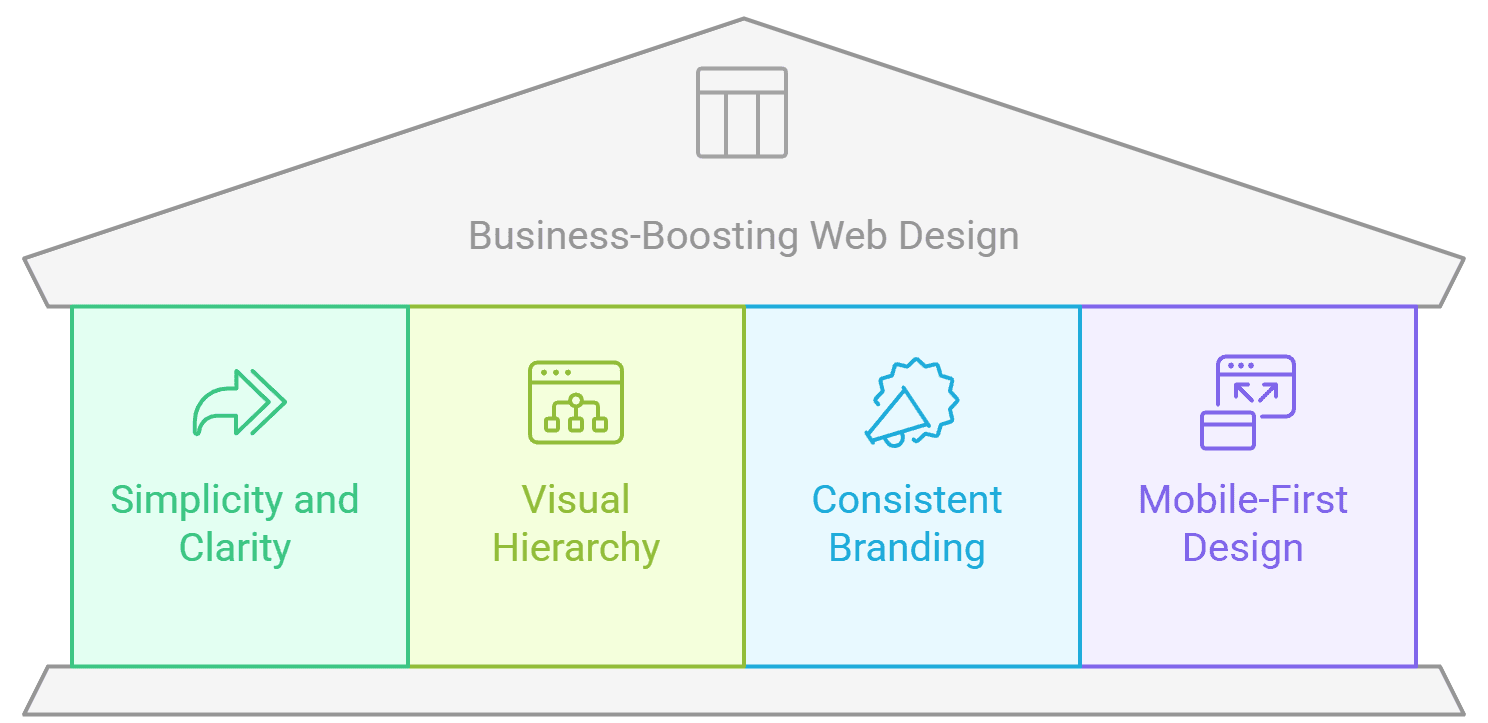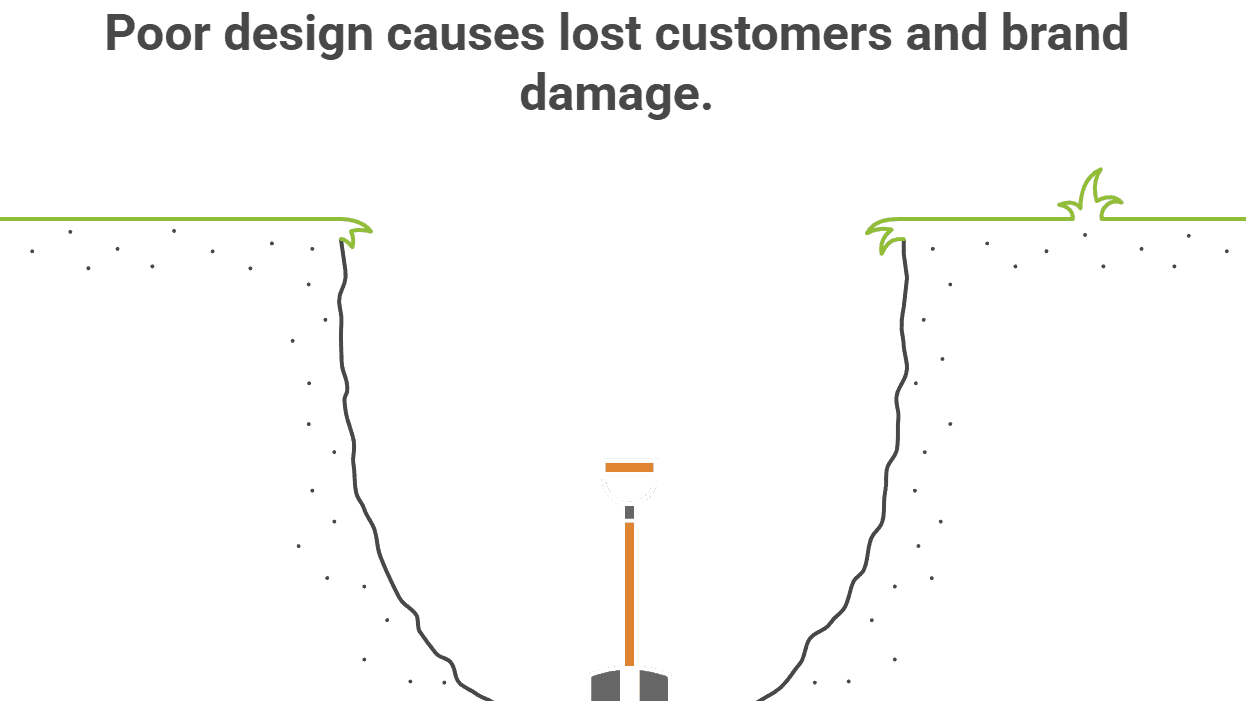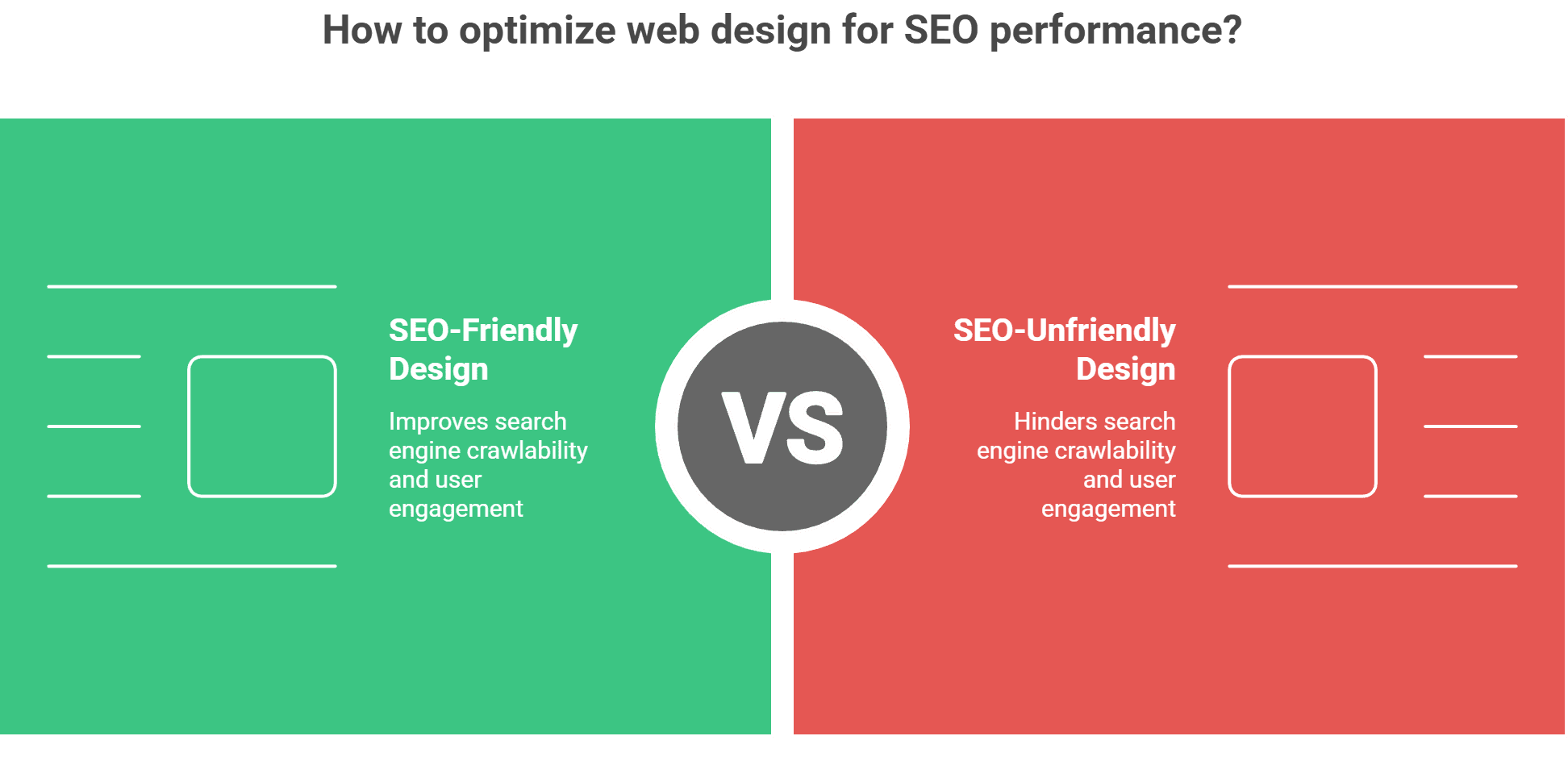
Your website isn’t just a digital brochure-it’s often the first handshake between your business and a potential customer. In a world where attention spans shrink by the second, your web design can either drive visitors toward taking action or push them right into your competitor’s arms.
Good web design is more than aesthetics. It supports your brand, enhances user experience, boosts your SEO, and directly influences your revenue. So, how do you make sure your design helps-not hurts-your business? Let’s break it down.
Understanding the Role of Web Design in Business
Your Website as Your Digital Storefront
Imagine walking into a messy store with flickering lights. Would you stay? Probably not. Your website works the same way. The design sets the tone for your brand, shaping the impression visitors carry into every interaction.
First Impressions and Trust Building
People judge your site in less than a second. Clean layouts, readable fonts, and strategic visuals can quickly build trust-while cluttered, outdated designs destroy credibility instantly.
The Psychology Behind Good Design
Good design uses psychology-color impacts emotion, spacing affects decision-making, and layout guides user behavior. When done right, design nudges visitors toward taking meaningful actions.
Key Principles of Business-Boosting Web Design

Simplicity and Clarity
Less is more. Simplifying your layout helps users find what they want faster. Avoid overwhelming them with unnecessary elements.
Visual Hierarchy
Headings, buttons, contrast, and spacing guide users’ eyes. Make the important stuff unmissable.
Consistent Branding
Color palettes, fonts, tone, and imagery must align with your brand identity. Consistency builds recognition and trust.
Mobile-First Design
More than half of your traffic is likely from mobile. Ensure your design adapts smoothly across screen sizes.
User Experience (UX): The Backbone of Effective Web Design
Smooth Navigation
Menus should be easy to find and simpler to understand. Confusing navigation equals lost customers.
Fast Loading Speeds
Slow websites kill conversions. Studies show even a one-second delay can drop conversion rates dramatically.
Accessibility for All Users
Your site should be usable for everyone-including people with disabilities. Accessible design broadens your audience.
Reducing Friction Through Smart Interactions
Micro-interactions, smooth animations, and clear forms make browsing easier and more enjoyable.
Avoiding Web Design Mistakes That Hurt Businesses

Overcrowded Layouts
Too much content confuses visitors. Keep it clean and intentional.
Slow-Loading Pages
Heavy images and unoptimized code can ruin user experience.
Poor Mobile Optimization
If users must zoom or scroll sideways, they’ll abandon your site instantly.
Hard-to-Find CTAs
Your call-to-action should stand out-think bold buttons, clear colors, and straightforward text.
Using Irrelevant or Low-Quality Visuals
Blurry images hurt your brand. Use high-quality visuals that support the message.
How Web Design Influences SEO Performance

Search Engine Crawlability
Search engines read your layout. A clean structure helps them understand your content better.
Page Structure and Headings
Properly used H1, H2, and H3 tags improve readability and SEO rankings.
Core Web Vitals and Performance
Google prioritizes fast, stable, mobile-friendly sites. Good design supports stronger rankings.
Reducing Bounce Rate
The more engaging your design, the longer visitors stay-boosting your SEO signals.
Building Trust and Credibility Through Design
Using Social Proof
Customer reviews, testimonials, and case studies show visitors they can trust you.
Clear Policies and Trust Badges
Privacy policies, secure checkout badges, and contact details give customers peace of mind.
Clean, Professional Layout
A polished website signals professionalism and commitment.
Conversions: Turning Visitors Into Customers
Optimized Calls-to-Action
A good CTA is like a friendly nudge-it should be visible, appealing, and clear.
User Journey Mapping
Plan how users move through your site. Reduce steps and make every action intuitive.
Landing Page Principles That Sell
Focused headlines, clear benefits, and compelling visuals create high-converting pages.
Web Design Tools and Resources to Improve Your Site
Analytics Tools
Google Analytics and similar platforms reveal which pages perform well-and which don’t.
Heatmaps
Tools like Hotjar show real-time user interactions to help you refine your layout.
UX Testing Tools
A/B tests help identify what design elements boost conversions.
Final Checks Before Launching or Redesigning
Performance Testing
Ensure your site loads fast and is error-free.
Mobile Testing
Check responsiveness across multiple devices.
Visual Consistency Review
Confirm fonts, colors, spacing, and images are unified and polished.
Conclusion
Your website can be your greatest business asset-or your biggest downfall. When designed with clarity, purpose, and user experience in mind, it becomes a powerful tool for growth. But when neglected, it repels customers and damages your credibility.
Focus on simplicity, usability, and strategic design choices to ensure your web design helps-not hurts-your business.
Quicktime Production wins SME Business of the Year Award 2025 by Great Companies. Read More.


